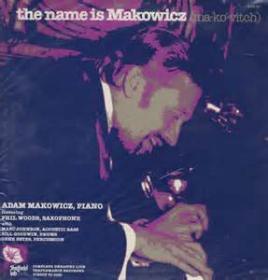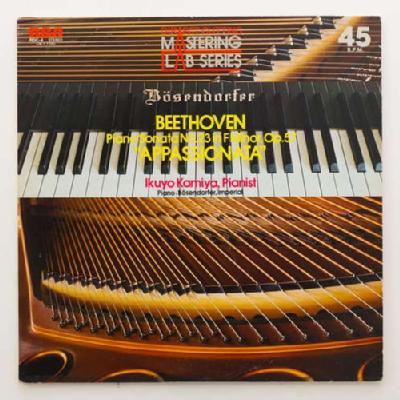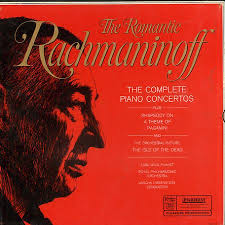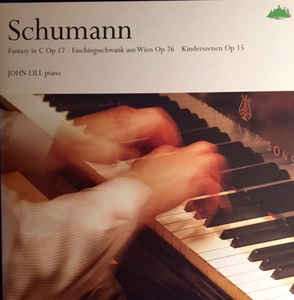Annie Fischer's Beethoven piano sonatas, reference level interpretations. Not the last word in sound quality, but the performances are incredible. And reproducing the Bosendorfer is no menial task for a hifi.
Your reference piano recordings
- Thread starter ack
- Start date
You are using an out of date browser. It may not display this or other websites correctly.
You should upgrade or use an alternative browser.
You should upgrade or use an alternative browser.
I agree sonics are superb. Played the heck out of it when I first picked it up. Then one day it took on this mechanical quality that drove me nuts. I haven't played it since.Glenn Gould's Goldberg Variations by Zenph. It's got the lowest noise floor of any recording I own.
Our Bosendorfer 225 (225 cm long or 7'4" with 92 keys) and today it costs discounted just about as much as a DCS Scarlatti stack retail (we got ours in 1985 selected by my wife at the factory when it was much, much cheaper). We had four members of the SF Symphony plus a fine pianist here about 15 months ago playing the Trout Quintet. To die for.
Larry
Most amazing performance is Richter's Pictures at an Exhibition on Columbia ML5600 from a Bulgarian recital in 1958. Horrible sonics, but totally hypnotizing performances. I really like the Moravec performances of Chopin, particularly. Seen him twice - in SF and in Prague. He does nuance between dynamic levels, particularly p to pp to ppp better than anyone I have ever heard.
Larry
Most amazing performance is Richter's Pictures at an Exhibition on Columbia ML5600 from a Bulgarian recital in 1958. Horrible sonics, but totally hypnotizing performances. I really like the Moravec performances of Chopin, particularly. Seen him twice - in SF and in Prague. He does nuance between dynamic levels, particularly p to pp to ppp better than anyone I have ever heard.
Our Bosendorfer 225 (225 cm long or 7'4" with 92 keys) and today it costs discounted just about as much as a DCS Scarlatti stack retail (we got ours in 1985 selected by my wife at the factory when it was much, much cheaper). We had four members of the SF Symphony plus a fine pianist here about 15 months ago playing the Trout Quintet. To die for.
Larry
Most amazing performance is Richter's Pictures at an Exhibition on Columbia ML5600 from a Bulgarian recital in 1958. Horrible sonics, but totally hypnotizing performances. I really like the Moravec performances of Chopin, particularly. Seen him twice - in SF and in Prague. He does nuance between dynamic levels, particularly p to pp to ppp better than anyone I have ever heard.
You have a Bosendorfer? Color me jealous! Of course having it is one thing, getting it to play music is quite another. I can't do either. The Moravec LP of Chopin is a reference to be sure. My wife and I saw him in NYC, early 1980s, 92nd Street Y. After his first encore, he exited and the house lights came on. As everyone began to file out into the aisles to leave, he reappeared at the front of the stage and said, "Beethoven, 32 Variations". COLLECTIVE GASP FROM THE CROWD ! He then sat at the piano and gave us all a minute to get settled! Everyone just sort of dropped down where they were; in the aisles, didn't matter. Very few pianists ever have the stones to perform 32 Variations and he just did it. WOW moment.
Another excellent piano recording: Brahms Piano Concerto #2, Dallas Symphony, Marc-Andre Hamelin - piano, Andrew Litton - conductor, Hyperion SACD. Recorded at my hometown venue, Myerson, and the recording captures the tonal beauty of the piano that I hear when I'm there.
meistersinger57
Well-Known Member
Let's start a thread on this. Here is the only album I could find in my collection that qualifies as my reference, and I have used it for about 15 years now (and what I demonstrated for Frantz at Goodwin's during his Spectral/Q7 audition).

If your system cannot accurately reproduce this piano you have work to do, as I do. If you are not startled by many of the tracks, like track #5 @6:33, you have work to do; thankfully, no problems there for me.
Nojima Plays Liszt on Reference Recordings RR-25 would be my second-best.
So what are your reference piano recordings?
Schumann Fantasy in C, Op.17
Faschingsschwank aus Wien, Op.26
Kinderszenen, Op.15
John Lill (piano)
Recorded 11-13 December 2003 in Henry Wood Hall, London
Long Out Of Print 2004 All Analogue 2LP 180gm Gatefold Original. John
Lill, Piano Recorded At Henry Wood Hall, Southwark, London In
December 2003 By Tony Faulkner. Cut By Stan Ricker. This Recording
Received An 11/11 Score On Michael Fremer's Analog Planet Blog,
August 1st, 2004.
[This review is of newly recorded analogue material issued on 180-gram
vinyl]
CD No: GREEN ROOM PRODUCTIONS
GREENPRO 4001/02
Two 180-gram LPs; analogue masters
Producer: John Boyden
Engineer: Tony Faulkner
Duration: 76 minutes
Reviewed: January 2005
“This issue is potentially of immense importance to the classical recording industry. For the first time in almost 20 years a UK-based classical company has recorded new material in both digital (CD) and analogue (LP) sound; the former is available on Classics for Pleasure. Because of this I shall devote a substantial part of this article – with no disrespect to John Lill – to a comparative evaluation of analogue and digital sound.
Enter Tony Faulkner’s company Green Room Productions, which records in both analogue and digital formats. The question for many readers will be why they should seek to restart a dead medium. Is this refusal to kneel at the altar of digital sound a piece of quaint nostalgia, or are there good audio reasons for it?
The answer to this question is, as already stated, very simple: good analogue is and always has been superior to digital sound whether on re-mastering or new recording. As the sleeve-notes record, at the recording sessions everyone including John Lill was amazed at how much better the analogue session master was than the digital equivalent. The reasons for this superiority are complex, but on the technical front Green Room use only two tracks (two mikes in other words), modernised Studer 10-inch tape-decks and modern valve amplification. The pressing company RTI use cutting heads which can cope with an uncompressed dynamic range on the production master-tape and the use of 180 gram vinyl; shorter playing-sides should further improve dynamic range, bass response, pitch stability and eliminate hiss. In terms of home listening, today there are turntable/arm/cartridge combos, amplifiers, speakers and cables which will reveal far more of the information on an LP, new or old, than ever before. This produces sound which has definition, bloom, sparkle, resonance and richness, an ability to reproduce a proper sense of acoustic space and sound and a natural sense of presence, instrumental timbre and flow. The tiring block-like construction of digital sound is entirely absent, as is its glossy artificiality.
All of these qualities can be heard on these Lill LPs. At all times the piano has more bloom, its attack and presence are effortlessly conveyed, the entire tonal range has natural sparkle, body and resonance, and the acoustic is tangible. The dynamic range is also greater in both micro and macro terms and this helps give a far greater impression of that elusive pianistic quality, touch. The CFP CD is good but its sound is more forced and the acoustic is a slightly reverberant nothingness in which the piano is suspended, and as with all CDs the sound lacks naturalness and flow.
Classical Source’s editor, Colin Anderson, was at the December 2003 sessions and he told me that the analogue master, as played-back then, exactly caught the sound of the heard-live piano, which had been rebuilt and tuned according to John Lill’s wishes. To vinyl aficionados this will come as no surprise, whether you listen to Ashkenazy in Rachmaninov in 1973 on Decca, or the then Stephen Bishop in Brahms in 1968 on Philips, or Kentner in Liszt in 1963 on EMI – you will hear piano sound which has all of the qualities mentioned above and very importantly you will actually be able to tell in blind comparisons which pianist is playing by the nature of the piano sound they produce – something CDs struggle to do.
Am I exaggerating the superiority of analogue sound? No. I hold musical evenings when friends bring round 78s, LPs, DVDs, VCs and CDs, and even those who have been brought up in the digital era admit that whether it be orchestra, piano, chamber ensembles or the human voice, analogue sound is better, the word that is used over and over again is “natural”. Some months ago I interviewed Mike Hudson, the President of Classic Records, the world’s largest producer of 180/200-gram re-mastering. He said that when LPs are reproduced properly they have a strange, almost indefinable, quality – which digital sound cannot emulate.
Certainly it is true that the more expensive the equipment then the superiority of analogue becomes ever more apparent, but at whatever price it is still there.
Finally I would urge those who have no knowledge of LPs, or who have been persuaded to ditch vinyl, to try and listen to these Lill/Green Room LPs. In the classical market, analogue recording may almost be dead, but that shouldn’t be the case: analogue is simply better and companies such as Green Room deserve support.”
http://www.classicalsource.com/db_control/db_cd_review.php?id=22
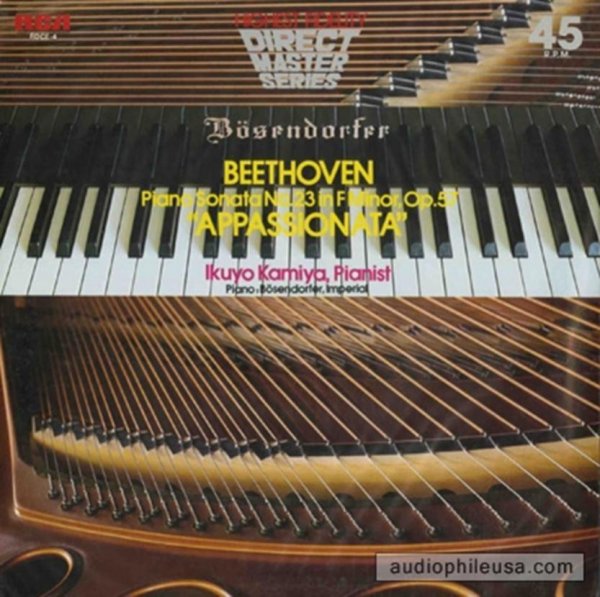
Ikuyo Kamiya ?– Beethoven's "Appassionata"
Label: RCA ?– RDC-4
Series: Direct Cutting Mastering Lab Series – RDC-4
Format: Vinyl, LP, 45 RPM, Album, Direct Disc
Country: Japan Released: 1977 Genre:Classical
“This is an excellent example of an "all-out" recording, being both a direct-to-disc and mastered at 45 RPM. The result is the finest piano recording I have yet heard, though there is some serious competition from Reference Recordings, Athena and others. The sonics are outstanding, with the piano recorded very upfront, so it appears to be in the listening room itself. The dynamic gradations, transparency, detail retrieval and cleanness on peaks are all extraordinary. It is also natural sounding with an excellent sense of decay and a low sound-floor. The performance will not equal a Schnabel, Gilels or Solomon, but it is still very competent and enjoyable. This record has been on the TAS list for years.Check the condition, it could have been a store demonstrator.
From: http://www.high-endaudio.com/SR-DIVINITY.html
Attachments
meistersinger57
Well-Known Member
Two more pearls...
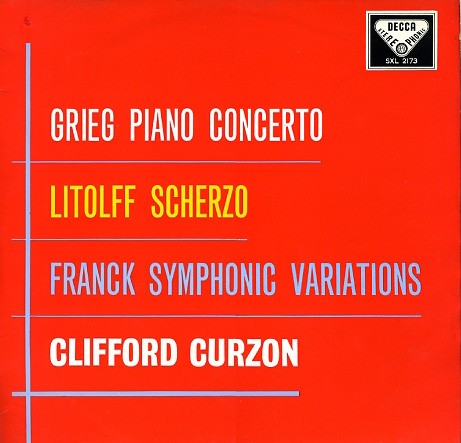
GRIEG-PIANO CONCERTO/LITOLFF-SCHERZO/FRANCK-CURZON-DECCA SXL 2173 (ALTO)
"A magnificent record. The performances have already been famous for decades, and now this reissue caps it off with superior sonics, the best ever not only for this recording, but for any piano concerto that I've heard.
The main sonic strength of this record is its total naturalness: The body, the harmonic texture and the inner details are outstandingly reproduced. Yet it is also very dynamic and clean. This is the sound that the RCA "Shaded Dogs" were supposed to have, but so very rarely did. The only real negatives are a touch of benign hiss, and maybe the recording could have been a little more immediate."
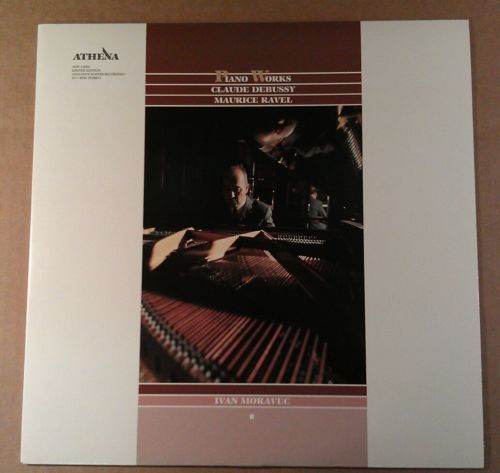
DEBUSSY/RAVEL-PIANO WORKS-MORAVEC-ATHENA ALSY-10002
“A beautiful recording, and only the 3rd solo piano record to make this list. It has the purity and immediacy of a direct-to-disc. The recording space is well captured, including the decays. The piano sounds extremely natural, and it has plenty of inner detail. The sound-floor is very low, so the music sounds "alive" even at the very softest volumes.
The sound is also extremely dynamic, with no compression on either low or high notes, and (most satisfying for me) it is still clean at the highest volumes, being totally devoid of the usual strain and distortion you routinely hear on other piano LPs. This record is obviously a serious contender for the designation of "the finest solo piano LP", and I have heard many. It is a "must have" record for lovers of piano music, considering everything.”

GRIEG-PIANO CONCERTO/LITOLFF-SCHERZO/FRANCK-CURZON-DECCA SXL 2173 (ALTO)
"A magnificent record. The performances have already been famous for decades, and now this reissue caps it off with superior sonics, the best ever not only for this recording, but for any piano concerto that I've heard.
The main sonic strength of this record is its total naturalness: The body, the harmonic texture and the inner details are outstandingly reproduced. Yet it is also very dynamic and clean. This is the sound that the RCA "Shaded Dogs" were supposed to have, but so very rarely did. The only real negatives are a touch of benign hiss, and maybe the recording could have been a little more immediate."

DEBUSSY/RAVEL-PIANO WORKS-MORAVEC-ATHENA ALSY-10002
“A beautiful recording, and only the 3rd solo piano record to make this list. It has the purity and immediacy of a direct-to-disc. The recording space is well captured, including the decays. The piano sounds extremely natural, and it has plenty of inner detail. The sound-floor is very low, so the music sounds "alive" even at the very softest volumes.
The sound is also extremely dynamic, with no compression on either low or high notes, and (most satisfying for me) it is still clean at the highest volumes, being totally devoid of the usual strain and distortion you routinely hear on other piano LPs. This record is obviously a serious contender for the designation of "the finest solo piano LP", and I have heard many. It is a "must have" record for lovers of piano music, considering everything.”
Last edited:
I am really getting into David Fray.
So very refreshing the he way of plays Bach. Sonics are fine too.
 http://www.prestoclassical.co.uk/r/Erato/0709442#download
http://www.prestoclassical.co.uk/r/Erato/0709442#download
So very refreshing the he way of plays Bach. Sonics are fine too.

Here are my favorites. I produced these along with my good friend David Rawn. Ilya Itin's performances of both books were mesmerizing and I have not heard better recordings... ever. they were recorded simultaneously at Quad DSD and 1/2 Tape. Currently they are available on most DSD download sites including Superhirez.com and nativedsd.com In the near future we will be offering them on 45rpm vinyl and reel to reel tapes.
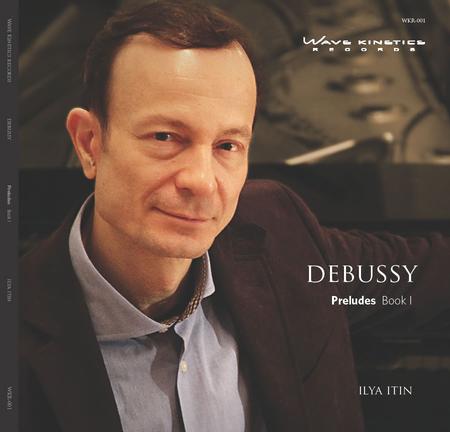
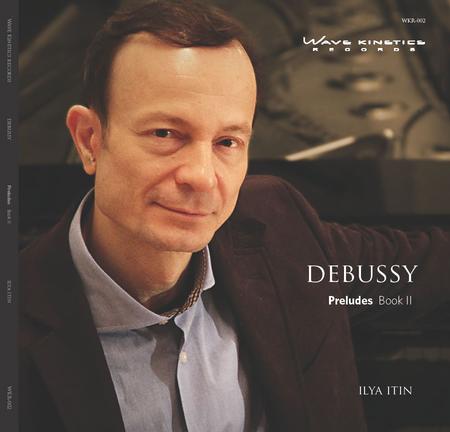


meistersinger57
Well-Known Member
Here are my favorites. I produced these along with my good friend David Rawn. Ilya Itin's performances of both books were mesmerizing and I have not heard better recordings... ever. they were recorded simultaneously at Quad DSD and 1/2 Tape. Currently they are available on most DSD download sites including Superhirez.com and nativedsd.com In the near future we will be offering them on 45rpm vinyl and reel to reel tapes.
View attachment 32612 View attachment 32611
DEBUSSY/RAVEL-PIANO WORKS-MORAVEC-ATHENA ALSY-10002
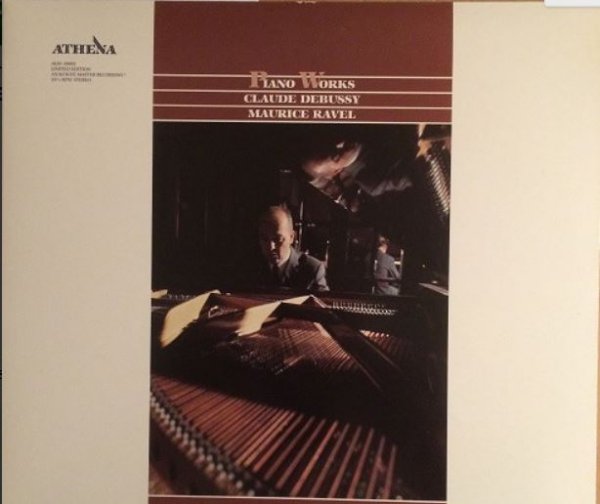
“A beautiful recording, and only the 3rd solo piano record to make this list. It has the purity and immediacy of a direct-to-disc. The recording space is well captured, including the decays. The piano sounds extremely natural, and it has plenty of inner detail. The sound-floor is very low, so the music sounds "alive" even at the very softest volumes.
The sound is also extremely dynamic, with no compression on either low or high notes, and (most satisfying for me) it is still clean at the highest volumes, being totally devoid of the usual strain and distortion you routinely hear on other piano LPs. This record is obviously a serious contender for the designation of "the finest solo piano LP", and I have heard many. It is a "must have" record for lovers of piano music, considering everything.”
Moravec made at least two recordings of Debussy piano music
for the Connoisseur Society label in the 1960s. These were
produced by Alan Silver and are some of the best piano
recordings available, notwithstanding their age. One of
these LPs (CS 2010) was re-mastered and reissued by Athena
Productions in a superb sounding pressing. If you ever see
the Athena ALSY 10002 reissue LP, get it.
Similar threads
- Replies
- 27
- Views
- 7K
- Replies
- 41
- Views
- 10K
- Replies
- 78
- Views
- 26K
- Replies
- 15
- Views
- 4K
| Steve Williams Site Founder | Site Owner | Administrator | Ron Resnick Site Owner | Administrator | Julian (The Fixer) Website Build | Marketing Managersing |


